If you’re looking for a low-maintenance, easy-to-grow plant for your backyard, look no further than the Hosta. Hostas are flowering plants in various colors and sizes, perfect for shady areas of your yard. Hostas are hearty plants that can tolerate a wide range of soil and light conditions, making them perfect for beginner and experienced gardeners. The Hosta plant has large, heart-shaped leaves and blooms in various colors, including white, blue, and purple.
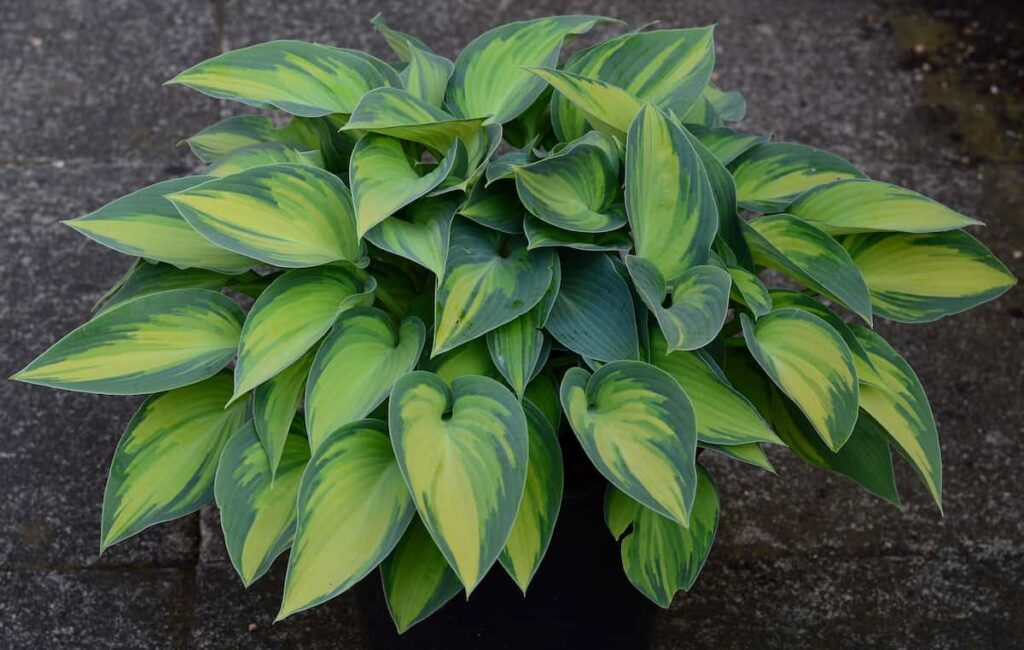
How to grow Hostas in your backyard
Types of Hostas
- Hosta Whirlwind – This perennial has green leaves that change color throughout the season. It grows lavender funnel-shaped flowers from mid to late summer.
- Hosta Gracillima – This dwarf Hosta has lance-shaped bright dark green leaves. It grows funnel-shaped lavender blue flowers with purple stripes in late summer and autumn. You should protect the plant from cold wind.
- Hosta Komodo Dragon – It is one of the largest Hostas and contains large cascading blue-green leaves.
- Hosta Crispula – Curled Hostas are easy-to-grow perennials and grow dark green leaves with creamy markings. These wavy leaves are excellent ground cover, especially in shaded areas, growing funnel-shaped lavender flowers in early summer.
- Hosta Halcyon –It is one of the slowest Hostas to develop, and it takes years to reach its final adult stage. The leaves will not change color if partial shade and proper sun exposure are provided.
- Hosta Guacamole – This variety is famous for its unusual color and fragrant flowers. Oval leaves are yellowish-green with gold shades and lines towards the center. The leaves support large aromatic white flowers that appear in the summer. This variety is perfect for shade gardens; you can grow it in containers.
- Hosta Hyacinthine – Slightly puckered leaves look blue-green but turn gray-green when they mature.
Climate requirement for growing Hostas in your backyard
Hostas are a type of plant that thrives in shady areas. They are perfect for adding some green to your backyard without worrying about them getting too much sun. However, there are a few things to remember regarding the climate requirements for growing Hostas in your backyard. Hostas are shade-loving plants, so they are the perfect addition to any backyard without direct sunlight.
While they will grow in sunnier conditions, they won’t thrive and will likely experience more pests and diseases. The ideal climate for growing Hostas is moist and has moderate temperatures. If your area has hot summers, you can still grow Hostas by providing them with afternoon shade.
In case you missed it: List of Plants You Can Propagate in Water: Easy and Best Plants to Grow
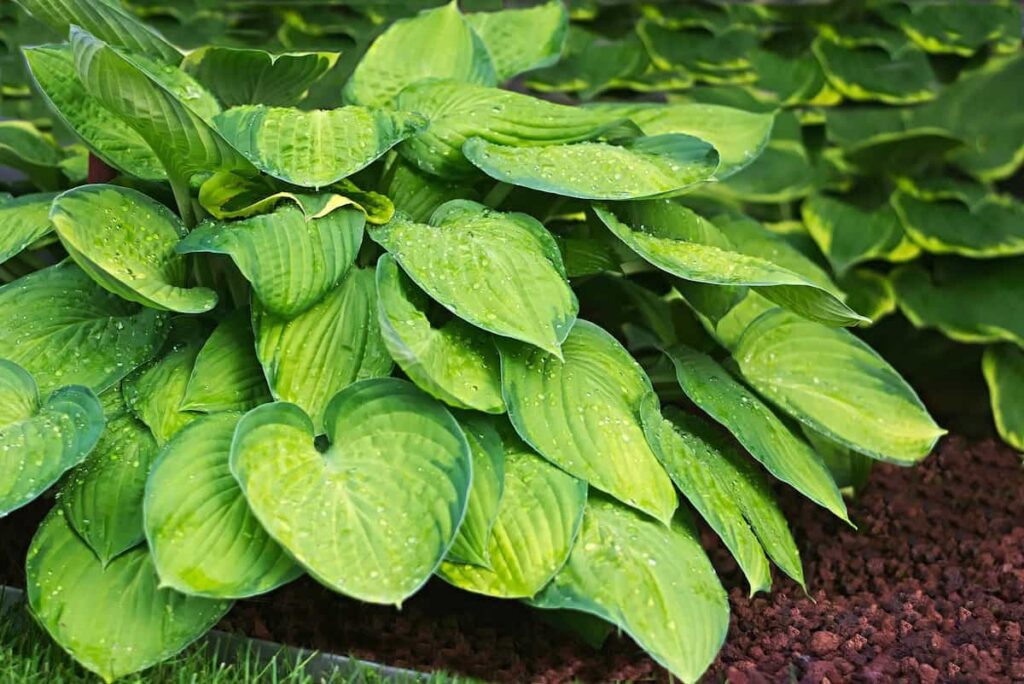
The first thing to remember is that Hostas need a fair amount of moisture. They will grow best in an area that gets a few hours of direct sunlight daily, but they also need protection from the hot afternoon sun. If you live in an area with very cold winters and hot summers, grow your Hostas in containers to bring them indoors during extreme weather conditions.
Soil requirement for growing Hostas in your backyard
Hostas are a type of plant that is commonly found in shady areas. They are known for their large, green leaves and ability to thrive in low-light conditions. All you need is a shady location and well-drained soil. They will also do well in soil amended with compost or other organic materials. If your soil is heavy or clay-like, it is essential to loosen it up before planting.
You can do this by adding sand or perlite to the mix. Hostas prefer a shady location but will tolerate some sun with enough moisture. They will need to do better in dry, sunny locations. Hostas will also benefit from a bit of mulch to help keep their roots cool and moist.
Water requirement for growing Hostas in your backyard
Hostas are relatively drought-tolerant, so they don’t need much water. However, they will need more water during hot, dry periods. The best way to water Hostas is to soak the ground around the plants deeply once or twice a week. To have a healthy and thriving Hosta plant in your backyard, you must ensure it gets the appropriate water. Depending on the climate you live in, this can vary. Hostas prefer moist soil and need to be watered regularly.
If the soil around your Hostas begins to dry out, they will start to wilt, and their leaves will begin to brown. This is a sign that they need to be watered immediately. When watering your Hostas, do so early in the day. This will help prevent disease and fungal growth. Water deeply and slowly so the water can penetrate the root system thoroughly.
In case you missed it: Balcony Grill Garden Ideas: Small Spaces, Apartments, and Best Plants to Grow on Grills
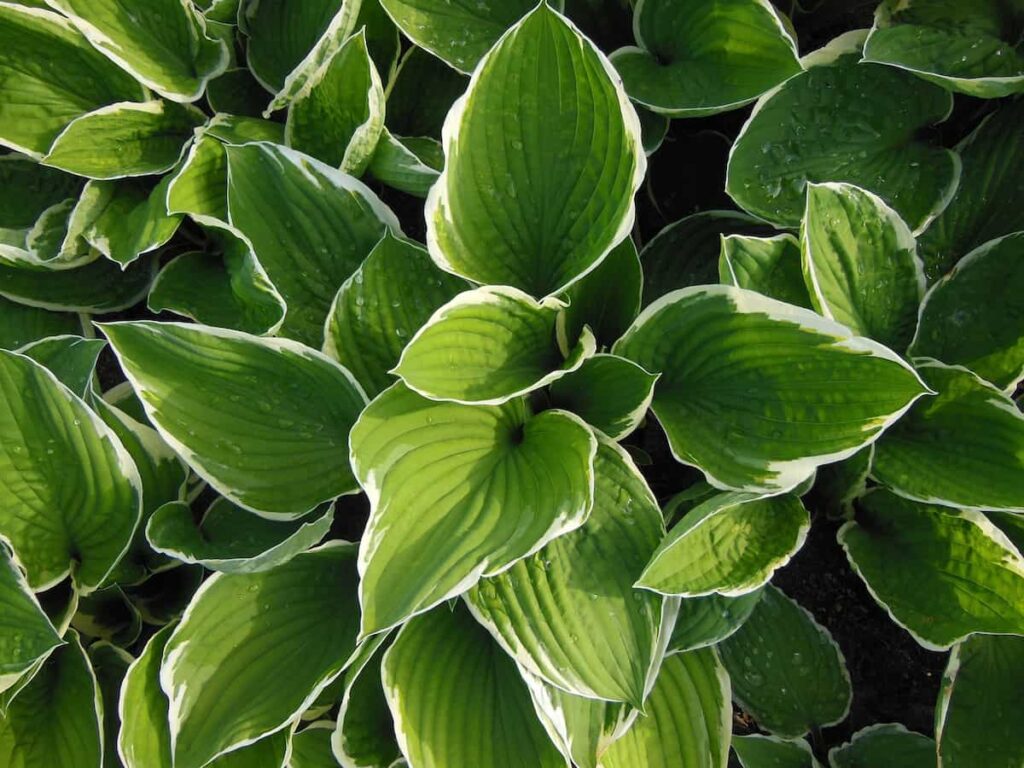
Propagation of Hostas
Propagating Hostas is a great way to increase your collection without purchasing new plants, and it’s a relatively simple process. There are two main methods of propagating Hostas: division and seed starting. The division is the easiest and most common method, as it simply involves dividing up an existing plant. This can be done in early spring or fall, and you only need a sharp spade or knife. Dig up the plant, carefully divide it into smaller sections, and replant it in well-drained soil.
Water well and keep an eye on the newly divided plants until they establish themselves. Seed starting is a bit more involved, but it’s still relatively easy. You can start growing Hostas from seed, but it can be a slow process. It can take two or three years for the seeds to germinate and produce big enough plants to transplant outdoors. Hosta seeds need a period of cold stratification to germinate, so they must be sown in late winter or early spring.
Sow the seeds on the moist potting mix or sand surface, and place them in a cool location. Keep the planting medium moist but not wet, and you should see tiny seedlings emerging within a few weeks to several months. Thin them out as necessary, transplanting the healthiest seedlings into individual pots when they reach 2 to 3 inches tall.
Transplanting Hostas seedlings
The best time to transplant Hostas seedlings is in the spring, after the last frost. You will need a sharp knife or spade to dig up the seedlings and a small trowel to transplant them. Be sure to water the seedlings well before transplanting. When transplanting, find a spot in your garden with rich, loose soil and partial shade. If you are planting more than one seedling, space them about 12 inches apart. Gently dig a hole with your trowel and carefully lower the seedling into the hole. You must fill in around the roots with soil and water well.
In case you missed it: 16 Best Outdoor Flowering Plants in India: How to Plant, Grow and Care
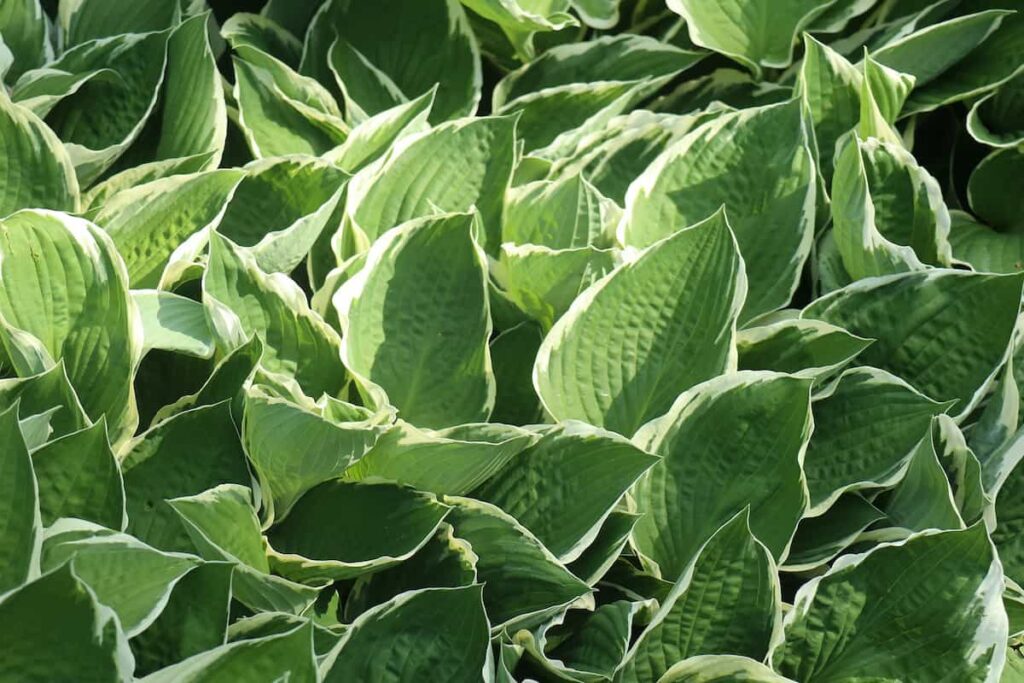
Hostas care
Fertilizer requirement for growing Hostas in your backyard
Hostas are a popular perennial that can add beauty and interest to your backyard. They come in many colors, sizes, and shapes and are easy to care for. Many people must realize that Hostas are very low-maintenance plants and don’t require much fertilizer. Although Hostas are relatively low-maintenance plants, they require some basic care to thrive. One important aspect of Hosta care is providing the right amount of fertilizer.
When it comes to fertilizing Hostas, less is more. Too much fertilizer can damage the plant. A light application of a balanced fertilizer, such as 10-10-10 in early spring, is all that’s needed. You should apply the fertilizer around the base of the plant, careful not to get any on the leaves. Too much fertilizer can be harmful to Hostas, causing them to produce more leaves than flowers and leading to nutrient burn.
On the other hand, insufficient fertilizer will result in stunted growth and fewer blooms. The best way to ensure that your Hostas get the perfect fertilizer is to use a slow-release product explicitly formulated for woody plants. This type of fertilizer will provide a steady supply of nutrients over time without the risk of overfeeding. Apply fertilizer according to the package directions, typically once or twice per growing season.
In case you missed it: How to Grow Coneflowers in Your Backyard: Soil, Propagation, Planting, and Care
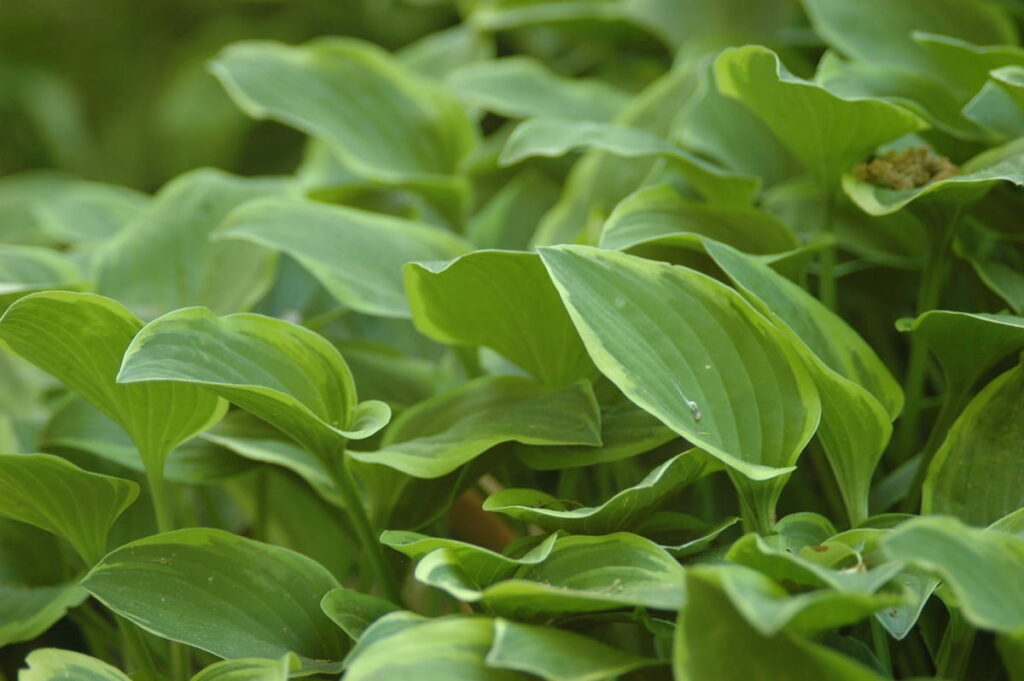
Pruning for Hostas
Pruning for Hosta is a bit different than pruning other plants. You’ll want to start by removing any dead or dying leaves. Then, cut back the plant by one-third to one-half. This will encourage new growth and help the plant to stay healthy. Finally, cut back any stems that are longer than 12 inches. This will help the plant to remain compact and prevent it from becoming too leggy. Shape your Hosta by trimming them into desired shapes. Remember not to cut too much at once, as this can shock the plant.
Deadheading for Hostas
Hosta is a popular garden plant because they are low-maintenance and have beautiful, variegated leaves. Deadheading not only helps the plant to look tidier, but it also helps to encourage new growth. To deadhead Hostas, cut off the flower stalk at the base of the plant. You can use pruning shears or a sharp knife for this. Make a clean cut so the plant can continue growing without any damage. After deadheading, your Hosta should continue to thrive and produce new growth throughout the season.
Hostas care in fall and winter
To take care of the Hostas in the fall, keep watering but pull back when fertilizing. The leaves will naturally start to die back. Cut plants to the ground to prevent pests or diseases from infesting the depreciating foliage. In winter, the Hostas are overall hardy and survive fine. But in cooler climates, it can help add a layer of dry mulch to the roots to insulate their roots.
Pests and diseases of Hostas and their control
- A few pests target Hostas specifically; luckily, some easy control methods exist. Slugs and snails love to feast on the leaves of Hosta, leaving behind tell-tale slime trails. The best way to combat these pests is to handpick them off the plants at night when they’re most active. You can also try setting out traps baited with beer or other fermented beverages; the slugs and snails will be attracted to the scent and crawl into the trap, where they’ll drown.
- Another common pest is the Japanese beetle, which skeletonizes the Hostas leaves by eating them from the inside out. You can use a neem oil product; this natural substance will repel Japanese beetles without harming your plants.
In case you missed it: Cool-season Plants for Pollinators: Vegetables, Flowers, Fruits, Shrubs, and Herbs
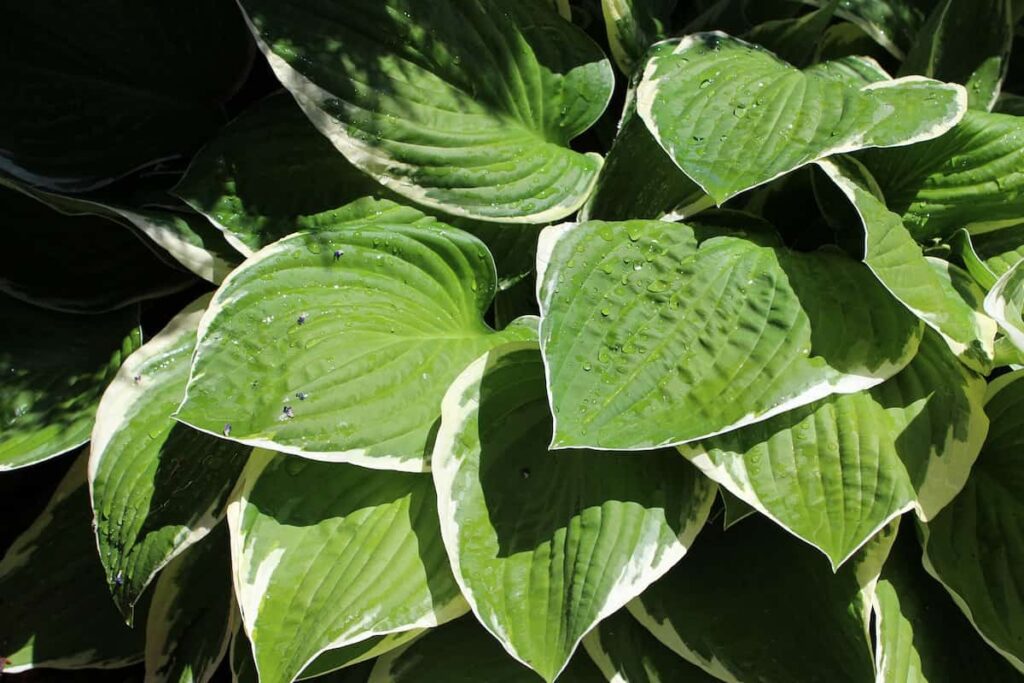
- A few diseases can affect Hosta, but fortunately, they are generally easy to control. The most common disease is powdery mildew, which appears as white powder on the leaves. It is usually not harmful to the plant but can make it look unsightly. To prevent powdery mildew, water your Hosta early in the day. You can also apply a fungicide specifically designed for powdery mildew.
- Another disease that can affect Hosta is crown rot. This happens when the stem at the base of the plant rots and turns black. Crown rot is usually caused by too much moisture around the plant. To prevent crown rot, ensure your Hostas are planted in well-draining soil, and don’t overwater them. Cut off the affected leaves and stems and destroy them to prevent the disease from spreading.
Conclusion
Hostas are the most popular perennial plants for the shade garden. They are relatively easy to grow and come in various colors, sizes, and shapes. Hosta is the best choice for adding color and interest to your landscape. Follow this article, and you’ll be well on your way to growing healthy and vibrant Hostas in your backyard.
- Flower Garden Designs and Layouts for Beginners
- Planting and Spacing Techniques in Papaya: A Beginner’s Guide
- Growing Gold: Essential Techniques for Planting Pineapples
- How to Make Kalanchoe Plant Bushy: Home Remedies and Solutions
- 11 Reasons Why Your Gardenia is Not Blooming: Home Remedies and Solutions
- Eco Elegance: The Guide to Designing a Drought-Tolerant Landscape
- Gardening on a Slope: Strategies for Hillside Landscaping
- Nourish and Flourish: Top Organic Mulches for Thriving House Plants
- Everything You Want to Know about Indian Mogra Flower: Discover Uses and Growing
- Green Thumb Success: Expert Tips for Cultivating Greenhouse Pumpkins All Year Round
- Maximize Growth & Flavor: The Ultimate Guide to Companion Planting in Herb Gardens
- How to Control Rhododendron Problems Naturally: Home Remedies and Organic Ways to Fix Them
- Natural Magic: The Remarkable Benefits of Cinnamon for Plants
- Best Steps to Revive Dying Tulip with Natural and Organic Treatment
- 10 Reasons Why Your Angel Trumpet is Not Blooming: Remedies and Treatment
- How to Fix Periwinkle Leaf and Flower-Related Problems: Natural Remedies and Solutions
- How to Fix Zinnias Leaf and Flower Problems: Discover Natural and Home Remedies
- Organic Steps to Induce Lemon Tree Flowers: A Comprehensive Guide
- Bloom Booster: Crafting the Perfect Homemade Bougainvillea Fertilizer
- Optimizing Growth: A Guide to Applying NPK Fertilizer for Potted Plants
- 10 Best Homemade Fertilizers for Rubber Plant: DIY Recipes and Application Method
- How to Boost Female Pumpkin Flowers: Effective Steps for More Flowers and High Yields
- Transform Your Indoor Garden: Top Benefits of Pink Salt for Houseplants
- 10 Best Homemade Fertilizers for Peacock Plants (Calathea): Easy DIY Guide
- Unlock Blooms: 9 Reasons Why Your Potted Chrysanthemum is Not Blooming
- 8 Reasons Why Your Potted Hibiscus is Not Blooming: Fix it with Simple Solutions
- Unlock Blooms: 9 Key Reasons Your Potted Frangipani Won’t Flower
- 10 Reasons Why Is My Ice Plant Not Blooming: Remedies and Treatment
- 10 Reasons Why My Potted Hydrangea Not Blooming: Treatment and Remedies
- 10 Reasons Why is My Wisteria Not Blooming: Remedies and Treatment
- 10 Reasons Why is My Goldfish Plant Not Blooming: Remedies and Treatment
- Maximize Your Space: Ultimate Guide to Balcony Gardening with Grow Bags
- 10 Reasons Why Your Iris is Not Blooming: Remedies and Treatment
- 10 Reasons Why Your Anthurium Plant is Not Blooming: Treatment and Remedies
- 10 Reasons Why Your Aquaponic Plants Are Not Flowering: Remedies and Treatment
- 10 Reasons Why Your Agapanthus is Not Flowering: Remedies and Treatment